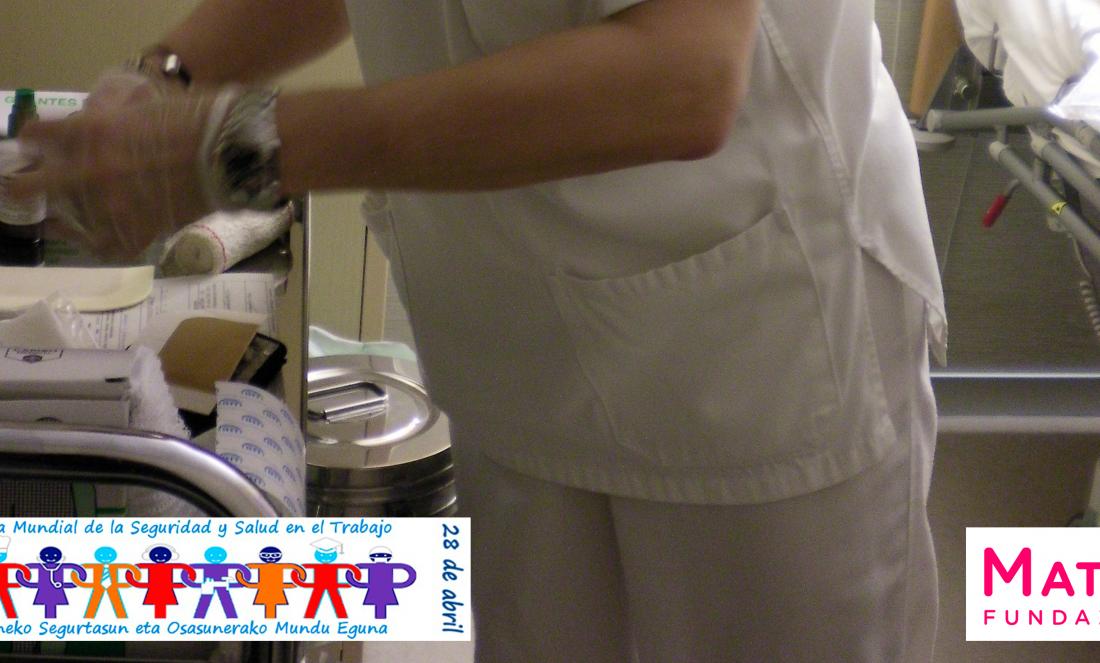
Health and Safety at Work in Social Health Centres
On 28 April, World Day for Safety and Health at Work will be celebrated, this year focusing on the Use of Chemicals in the Workplace.
According to data from the International Labour Organization (ILO): every 15 seconds, a worker dies from a work-related accident or disease and 160 workers suffer an accident at work.
Ensuring that people are in the best possible condition to carry out their work should be one of the essential objectives of any organisation, and for Matia Fundazioa it is one of its strategic objectives. This can only be achieved if there are well-trained, motivated professionals who are capable of acting in each of the situations that may arise and with advanced management and organisational systems, with humanistic, comprehensive and continuous improvement approaches.
That is why Matia Fundazioa has had a Health and Safety Management System accredited according to the standards established in OHSAS 18001 since 2003. As is logical, the Health and Safety Management System is integrated with the Quality Management System (ISO 9001) and the Environmental Management System (ISO 14001), given the profound interrelationships between them, as well as the mutual synergies that are generated.
The main difference with the other management systems is that it is developed within a tripartite framework, between Management, Workers and the Labour Authority. And it is in these moments of crisis that greater support is needed from the Administration, especially to promote the development of innovative policies in the prevention of occupational risks and to avoid a reduction in investment in health and safety in organisations.
The key success factors in implementing the Health and Safety Management System at Matia Fundazioa were:
- The existing organizational leadership, whose role has been fundamental to the success of the system implemented and its sustainability throughout these 11 years.
- The existing corporate culture shared by all employees, focused on the continuous improvement of each and every one of the management areas.
- The participation of the employees, highlighting the involvement of the prevention delegates, with the aim of promoting safe behaviour and involving them in decision-making processes related to their well-being at work.
- Training and promotion of competencies among workers, with the aim of improving their capacities, skills and abilities in the area of risk prevention
- Communication and transparency of information on the working environment, its possible risks and the correct way to combat them.
- The Alliance established with our External Prevention Service, fully integrated in our organization.
- The Planning, Control and Review of the actions carried out, thus allowing us to achieve continuous improvement, analysing the working conditions and events that have occurred within the organisation and through comparison with other companies.
With regard to the results obtained in the implementation of the management system in recent years, we would like to highlight the following
- The positive trend in the reduction of absenteeism due to accidents.
- The high importance given by workers to health and safety conditions through work satisfaction studies, this being the second most relevant item for them. Accompanied in turn by a slight improvement in overall satisfaction with this item, although we still have ample room for improvement.
- The adaptation of training actions to the specific needs of our organisation, highlighting among others
- Mobilization of users and handling of technical aids
- Firefighting in a real situation (Su-eskola)
- Positive conflict management and resolution
- Physical restraint techniques and verbal and non-verbal communication skills, to improve staff skills in handling users with behavioural disorders.
- The following procedures and instructions, among others, have been developed as a result of the systematic review of results, identification of internal needs, new legislation and updating of knowledge:
- Prevention and action against violence and aggression in the workplace
- Preventive measures and action in cases of hostile behaviour (harassment at work)
- Preventive actions and action in the face of accidents with biological risk
- Procedure and Business Coordination Manual, with information on risks and measures to be followed in case of emergency for external companies
- Maternity protection against occupational hazards
- Manual with relevant information on health and safety for new workers.
In conclusion, and after analysing the results and the current situation, everything indicates that the next logical step for organisations committed to the safety and health of workers, such as ours, is to opt for Healthy Company Models, as it has been demonstrated that they promote health in the workplace:
- Reducing accidents and illnesses, especially chronic ones
- Every euro invested in health and safety promotion programmes generates a return on investment of between 2.5 and 4.8 euros in absenteeism and between 2.3 and 5.9 euros in sickness costs.
- It reduces absenteeism, i.e. going to work when sick and not performing when healthy, which can be as high as 33% or more.
- It reduces social security costs, by reducing health costs by up to 26.1%, temporary or permanent disabilities, pensions, etc.

Add new comment